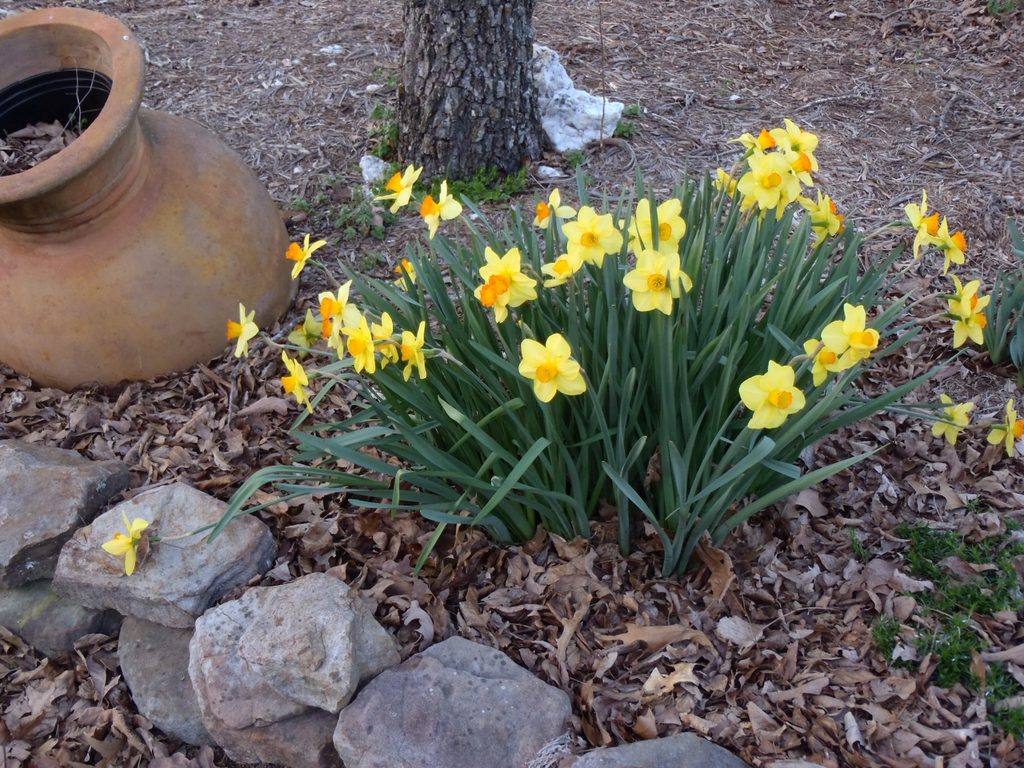By Jessica Strickland, Wayne County Horticulture Extension Agent
Welcome Spring with Fall Planting
Many gardeners incorporate spring-flowering bulbs into their landscapes to enjoy the first vibrant colors of the season. However, the optimal time to plant these bulbs—late fall—arrives when spring feels like a distant memory and you wouldn’t typically be thinking about spring color.
Timing Is Everything
Spring-flowering bulbs should be planted in November, typically when soil temperatures drop below 60°F. Popular varieties include daffodils, tulips, crocus, and hyacinths, just to name a few. These bulbs function like pre-packaged plants, storing all the food and energy needed for successful growth.
The November planting window is crucial because most spring-flowering bulbs require a 12- to 16-week chilling period to produce flowers. Planting in November allows the bulbs to meet this necessary chilling requirement. Without adequate chilling time, bulbs usually produce shorter stems and bloom close to the ground.
Selecting and Storing Quality Bulbs
When purchasing bulbs, choose ones without mold, bruising, or soft spots. If you buy bulbs in September or October, they should be stored in a cool area until planting time arrives in November.
Planting Guidelines
The planting depth and spacing of bulbs depend on the bulb’s size. As a general rule, plant bulbs three to four times as deep as the width of the bulb, measured from the bulb’s base. For spacing, plant large bulbs 3 to 6 inches apart and small bulbs 1 to 2 inches apart.
Fertilization Strategy
Fertilizing bulbs will not help with this season’s performance, since the bulb already has food stored. However, fertilizer will help for future seasons. There are two options for fertilizing bulbs:
Include a slow-release fertilizer in the soil as you are planting the bulbs
Apply a soluble, quick-release fertilizer at the time of planting and again when shoots start emerging
A 10-10-10 fertilizer is recommended for either option. Along with applying a complete fertilizer, incorporating some additional phosphorus at the time of planting can encourage root growth. Bone meal or superphosphate are often used as types of phosphorus. However, it is important to get a soil test of the planting area to determine if there is already enough phosphorus in the soil, which could save you time and money.
The Tulip Challenge
A common question often asked with spring-flowering bulbs deals with tulips. People often plant tulips, enjoy them for one season, but are then disappointed when they don’t return the following year. In areas like Eastern North Carolina, tulips are often treated as annual flowers in that they must be replanted every year. Our climate and soil temperature tend to stay too warm for tulips to successfully come back year after year.
Plan Ahead for Spring Beauty
As we get into the fall season, take time to purchase some spring-flowering bulbs to plant this November. When late winter arrives and you are anxiously awaiting spring weather, you will be glad that you planted those bulbs and added color in the landscape to welcome in spring!
Jessica Strickland is an Agriculture Extension Agent, specializing in horticulture for North Carolina Cooperative Extension in Wayne County.
Learn More
Sign up for Wayne County Extension Gardening email list to receive timely gardening tips and more at https://wayne.ces.ncsu.edu/email-me
Follow us on Facebook @waynecooperativeextension and Instagram @waynecountyextensionnc
Visit the North Carolina Extension Gardener Plant Toolbox to discover more plant ideas for your landscape at https://plants.ces.ncsu.edu
![]()


Comments are closed.